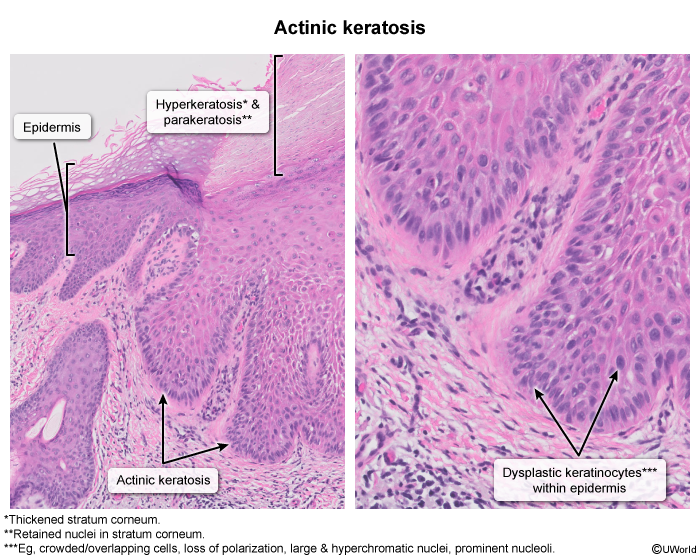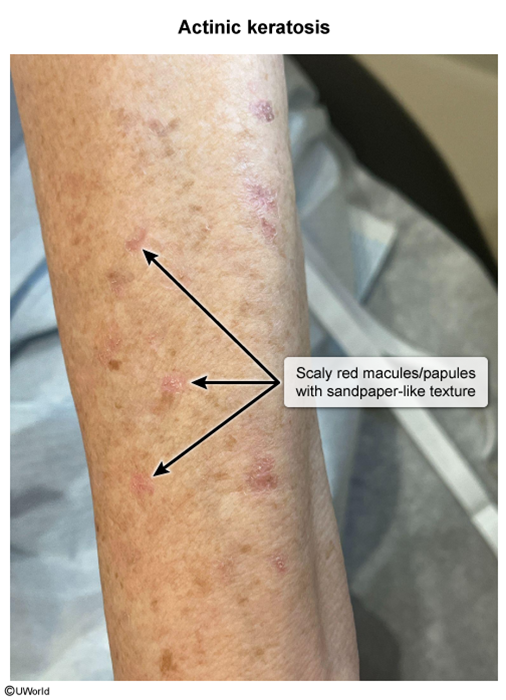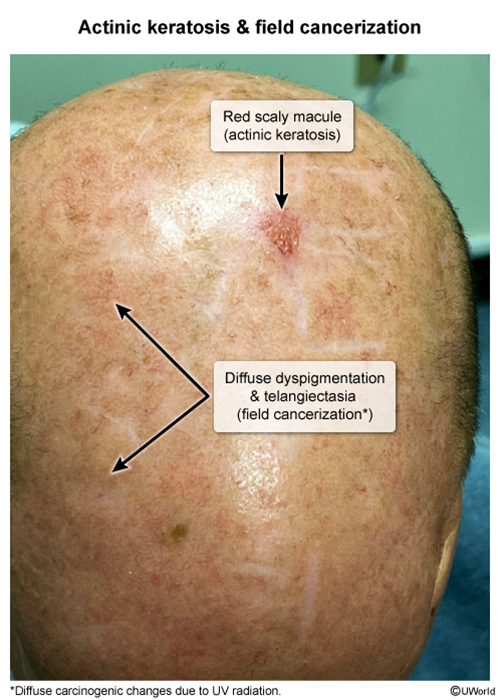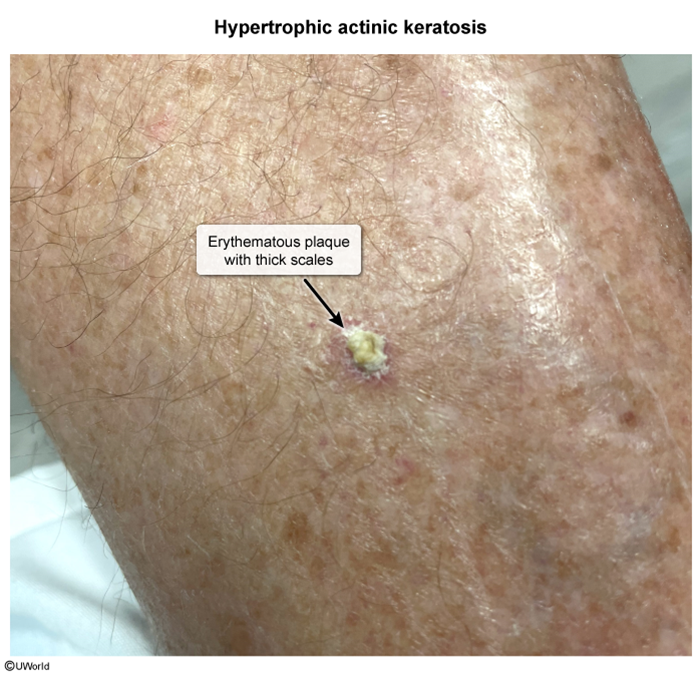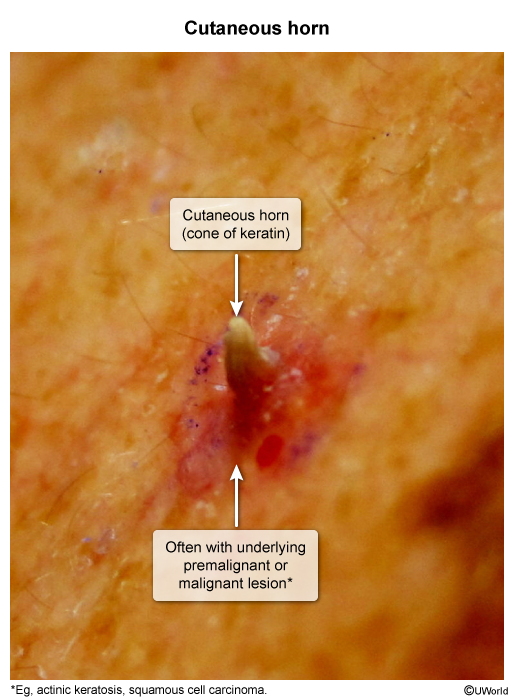Actinic Keratosis
Article Sections
Introduction
Actinic keratosis (AK) is a precancerous skin lesion that develops due to chronic sun exposure. They are common in fair-skinned individuals and often appear on sun-exposed areas such as the face, alopecic scalp, ears, neck, and arms. Although most AKs remain stable, a small percentage can progress to cutaneous squamous cell carcinoma (SCC). Early detection and treatment are essential to prevent malignant transformation.
Pathophysiology
Chronic ultraviolet (UV) radiation exposure induces DNA damage in keratinocytes (Figure 1), leading to genetic mutations. These mutations can disrupt cell cycle regulation and apoptosis, resulting in uncontrolled cell proliferation. Over time, these abnormal keratinocytes accumulate and form AKs.
Risk factors
- Chronic sun exposure/history of sunburns.
- Fair skin.
- Disorders of DNA repair (eg, xeroderma pigmentosum).
- Immunosuppression (eg, chronic immunosuppressive therapy).
Continue Learning with UWorld
Get the full Actinic Keratosis article plus rich visuals, real-world cases, and in-depth insights from medical experts, all available through the UWorld Medical Library.
Figures
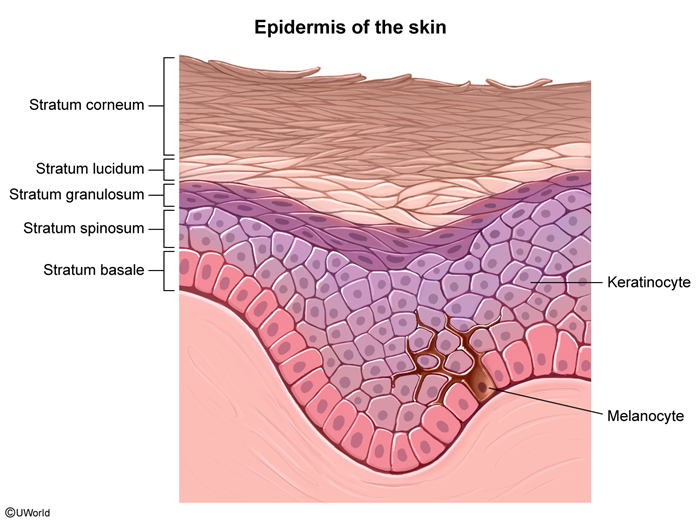
Images
